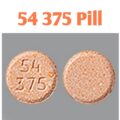Subutex is a brand of buprenorphine used to treat dependence/addiction to opioids. Buprenorphine belongs to a class of drugs called mixed opioid agonist-antagonists. It helps prevent withdrawal symptoms caused by stopping other opioids. It is used as part of a complete treatment program for drug abuse (such as compliance monitoring, counseling, behavioral contract, lifestyle changes).
Buprenorphine is a partial agonist at the mu-opioid receptor, and is available in two dosage strengths, 2 mg buprenorphine and 8 mg buprenorphine (as the free base, equivalent to 2.16 mg buprenorphine hydrochloride USP and 8.64 mg buprenorphine hydrochloride USP). Each tablet also contains lactose, mannitol, cornstarch, povidone K30, citric acid, sodium citrate, and magnesium stearate. Subutex is used as part of a complete treatment plan to include counseling and psychosocial support.
How is Subutex Used?
Subutex (Buprenorphine) alone is usually used for the first 2 days after you have stopped all other opioids. It is usually given in your doctor’s office. Your doctor will then switch you to the combination buprenorphine/naloxone medication for maintenance treatment. The combination with naloxone works the same way as buprenorphine alone to prevent withdrawal symptoms. It is combined with naloxone to prevent misuse (injection) of the medication. See: Subutex vs Suboxone: Similarities and Differences
Subutex works best when the first dose is started after signs of opioid withdrawal have begun. Subutex can cause withdrawal symptoms if started too soon after your last opioid use. Follow your doctor’s instructions for your treatment plan.
The dosage is based on your medical condition and response to treatment. Do not increase your dose, take the medication more frequently, or take it for a longer time than prescribed. Properly stop the medication when so directed. Use this medication regularly in order to get the most benefit from it. To help you remember, use it at the same time each day.
Suddenly stopping this medication may cause withdrawal, especially if you have used it for a long time or in high doses. To prevent withdrawal, your doctor may lower your dose slowly. Tell your doctor or pharmacist right away if you have any withdrawal symptoms such as restlessness, mental/mood changes (including anxiety, trouble sleeping, thoughts of suicide), watering eyes, runny nose, nausea, diarrhea, sweating, muscle aches, or sudden changes in behavior.
What are the Possible Side Effects of Subutex?
Subutex can cause drowsiness, dizziness, constipation, or headache may occur. If any of these effects persist or worsen, tell your doctor or pharmacist right away. To prevent constipation, eat dietary fiber, drink enough water, and exercise. You may also need to take a laxative. Ask your pharmacist which type of laxative is right for you.
To reduce the risk of dizziness and lightheadedness, get up slowly when rising from a sitting or lying position. Remember that your doctor has prescribed this medication because he or she has judged that the benefit to you is greater than the risk of side effects. Many people using this medication do not have serious side effects.
Severe (possibly fatal) breathing problems can occur if this medication is abused, injected, or mixed with other depressants (such as alcohol, benzodiazepines including diazepam, other opioids). Tell your doctor right away if you have any serious side effects, including interrupted breathing during sleep (sleep apnea), mental/mood changes (such as agitation, confusion, hallucinations), stomach/abdominal pain, signs of your adrenal glands not working well (such as unusual tiredness, weight loss).
Get medical help right away if any of these rare but serious side effects occur: fainting, fast/irregular heartbeat, severe dizziness, slow/shallow breathing, unusual drowsiness/difficulty waking up.
Although this medication is used to prevent withdrawal reactions, it may rarely cause opioid withdrawal symptoms, including diarrhea, severe mental/mood changes (such as anxiety, irritability, trouble sleeping), muscle stiffness, or shakiness. This is more likely when you first start treatment or if you have been using long-acting opioids such as methadone. If such symptoms occur, notify your doctor or pharmacist right away. This drug may rarely cause serious liver disease. Get medical help right away if you have any symptoms of liver damage, including dark urine, persistent nausea/vomiting, loss of appetite, yellowing eyes/skin, severe stomach/abdominal pain.
A very serious allergic reaction to this drug is rare. However, get medical help right away if you notice any symptoms of a serious allergic reaction, including rash, itching/swelling (especially of the face/tongue/throat), severe dizziness, trouble breathing.
This is not a complete list of possible side effects. If you notice other effects not listed above, contact your doctor or pharmacist.
Can You Snort Subutex?
The practice of snorting Subutex is very common in prison settings. Stand alone, buprenorphine the active ingredient in Subutex can produce a fairly powerful high, especially if it’s crushed to be smoked or snorted, or dissolved into a solution to be injected. Despite the fast delivery and more powerful effects that come with snorting drugs, the nose simply wasn’t meant to inhale powders. Even a single use can cause swelling of the inner linings of the nose, lung infections, nasal blockages, and compromised respiratory tracts. Do not snort or inject (“shoot up”) Subutex. Injecting it is dangerous and may cause severe withdrawal symptoms.
According to a study in the International Journal of Prison Health, the misuse of Subutex by snorting emerged as a significant theme and was widespread and prisoners used various tactics to obtain the medication. Various complex and interlinked reasons were given to explain why Subutex was snorted in prison. The main motivation for snorting was to experience a prolonged euphoric opiate effect, believed to help to combat the boredom of being in prison. The price of illicit Subutex in prison was linked to its availability, but it was generally cheaper than heroin, thus contributing to its use. Suboxone AN 415: Uses, Abuse, Side Effects, Addiction





